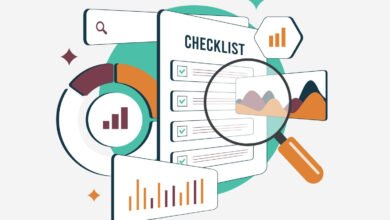FAQ Schema: The Rise, Fall, and SEO Impact Today

▼ Summary
– Google restricted FAQ rich results to government and health websites in August 2023, making the schema ineffective for most marketers.
– FAQPage markup should only be used on genuine FAQ pages and never for advertising or promotional purposes.
– Well-structured Q&A content remains important for AI-driven search, as large language models rely on clear, factual answers.
– Create dedicated FAQ hubs with complete questions and answers to improve visibility in AI search results and comply with Google’s guidelines.
– Monitor FAQ performance using tools like Google’s Rich Results Test and Search Console to ensure content aligns with both search and AI systems.
The landscape for FAQ schema has fundamentally shifted, moving away from a universal SEO tactic to a specialized tool with strict eligibility rules. Following Google’s August 2023 update, the visibility of FAQ rich results was drastically reduced, now being primarily reserved for authoritative government and health websites. This change effectively closed the door for most marketers who previously leveraged FAQ markup to capture more space on search engine results pages. The core directive from Google is clear: FAQPage structured data must not be used for advertising and should only be implemented on pages whose primary purpose is to provide genuine question-and-answer content.
This evolution in guidance is a familiar pattern in the SEO world, where once-recommended practices eventually become obsolete. The key takeaway is that even trusted strategies require constant reevaluation.
Navigating the New Era of Q&A Content
While the “add FAQs everywhere” approach is no longer viable, the fundamental importance of the question-and-answer format has not diminished. In fact, with the rise of AI-powered search, providing clear, structured answers is more critical than ever. Large language models depend on well-organized, factual information to generate responses. If your website fails to supply direct answers to user queries, you risk becoming invisible in these new search interfaces. The central challenge now lies in strategically placing FAQ content and structuring it effectively for both human readers and AI systems.
Incorporate Q&A Sections for Users, Not Just for Markup
You can and should still add question-and-answer content to product, service, and category pages. This content is invaluable for addressing common buyer objections, explaining complex features, and exploring various usage scenarios. However, you should refrain from applying FAQPage schema to these marketing pages unless the page’s main objective is to answer questions. This approach keeps you compliant with Google’s guidelines while ensuring your content remains machine-readable for AI models.
Develop Authentic FAQ Hubs
If your goal is to legitimately use FAQPage schema, the solution is to create dedicated FAQ pages. These should be focused on a single, high-intent topic and present a comprehensive list of questions with their full-text answers. This format is ideal because it helps AI systems map user questions to authoritative responses, thereby increasing the likelihood that your content will be cited in AI-generated search summaries.
Craft Answers for a Dual Audience
When writing answers, aim for conciseness and factual accuracy, using natural language. Avoid promotional filler text. AI models excel at processing content that demonstrates genuine expertise, information that is direct, clear, and rich with relevant entities and facts that establish your topical authority.
Steer Clear of Promotional Language in Answers
Google explicitly prohibits the use of FAQ markup for advertising purposes. Even without applying schema, you should avoid turning your answers into sales pitches. Always prioritize user value first, and let internal links or naturally placed calls-to-action guide readers toward conversion.
Adhere to the ‘Single Answer’ Principle
Only use FAQPage markup in situations where there is one definitive, non-user-generated answer to a question. For topics that warrant multiple perspectives or opinions, it is better to use a QAPage schema or structure the information as a long-form article with descriptive subheadings.
Track Performance Across Search and AI Platforms
It is essential to validate your markup using Google’s Rich Results Test and monitor your visibility through Search Console. Additionally, observe how your FAQ content surfaces in AI search tools like Gemini, Bing Copilot, and ChatGPT. Even though FAQ schema may no longer generate rich snippets, well-structured Q&A remains a cornerstone for ensuring AI systems can retrieve your brand’s answers.
A Practical Guide to FAQ Schema Application
Understanding the correct placement of FAQs and their corresponding schema is crucial for balancing compliance with visibility. The following framework clarifies when to use schema and when to omit it.
| Use Case | Purpose | FAQ Placement | Schema Usage | Best for |
|---|---|---|---|---|
| Dedicated FAQ Hub | Provide authoritative answers on a single topic | Standalone FAQ page with all Q&As visible | ✅ FAQPage Schema | Rich results (if eligible), LLM retrieval |
| Marketing / Product Pages | Address buyer questions and objections | Embedded Q&A sections within pages | ❌ No Schema | On-page conversions, featured snippet potential |
| Knowledge Base / Support | Answer technical or procedural questions | Article or help doc with clear Q&A | ✅ FAQPage Schema (if page is entirely FAQ) | LLM retrieval, customer self-service |
| Promotional Content | Drive sales or leads | Landing pages, campaign pages | ❌ Never Use Schema | Sales-driven CTAs, brand awareness |
✅: Safe to use FAQPage schema under Google’s current rules.
❌: Use Q&A format for user value, but do not apply schema.
Hallmarks of a High-Performing FAQ Page
The most successful FAQ pages share two critical characteristics: they authentically answer user questions, and they present those answers in a clean, accessible format that search engines can easily parse.
Exemplary FAQ Pages with Effective Schema
These examples adhere to Google’s guidelines by offering user-facing, non-promotional content structured around genuine inquiries.
Vashon-Maury.com FAQ: A locally focused page with clear, visible answers and a dedicated structure. These cases prove that a powerful FAQ page is built on a foundation of genuine utility, with schema serving to enhance an already robust resource.
FAQ Pages with Untapped Potential
Many existing FAQ pages already offer significant user value and meet Google’s guidelines but miss out on enhanced visibility by not implementing structured data. Adding compliant FAQPage schema could unlock rich results and improve their performance in AI search summaries.
The Enduring Value of FAQs in SEO
The recent changes to FAQ schema serve as a potent reminder that SEO is a discipline of adaptation. Yesterday’s winning tactic can be restricted tomorrow. The modern goal is to proceed with strategic intention: understanding when to apply structured data, when to keep things simple for users, and when a complete pivot is necessary.
By creating FAQ content that prioritizes the user, aligns with search engine guidelines, and is structured for both traditional and AI-driven search, you build a resilient foundation for visibility. Use FAQ markup as a precision instrument, not a broad-spectrum solution. Lasting SEO success hinges on timing, precision, and the ability to adapt, knowing precisely when to accelerate, when to hold steady, and when to change course entirely.
(Source: Search Engine Land)




